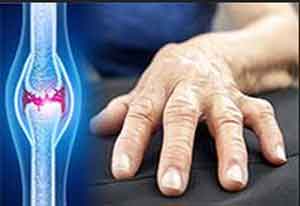- Home
- Editorial
- News
- Practice Guidelines
- Anesthesiology Guidelines
- Cancer Guidelines
- Cardiac Sciences Guidelines
- Critical Care Guidelines
- Dentistry Guidelines
- Dermatology Guidelines
- Diabetes and Endo Guidelines
- Diagnostics Guidelines
- ENT Guidelines
- Featured Practice Guidelines
- Gastroenterology Guidelines
- Geriatrics Guidelines
- Medicine Guidelines
- Nephrology Guidelines
- Neurosciences Guidelines
- Obs and Gynae Guidelines
- Ophthalmology Guidelines
- Orthopaedics Guidelines
- Paediatrics Guidelines
- Psychiatry Guidelines
- Pulmonology Guidelines
- Radiology Guidelines
- Surgery Guidelines
- Urology Guidelines
SLE 2017 classification criteria presented by EULAR and ACR

The European League Against Rheumatism (EULAR) and the American College of Rheumatology (ACR) has presented the draft of new classification criteria for systemic lupus erythematosus (SLE) during a session at the 2017 ACR/ARHP Annual Meeting this week in San Diego, California, at the San Diego Convention Center.
The EULAR/ACR Classification Criteria Update for SLE session took take place on Tuesday, Nov. 7, at 7:30 a.m. and included the following presentations:
- "Classification Criteria in Systemic Lupus Erythematosus: Focus, Limitations and Unmet Needs" by Martin Aringer, MD
- "Presentation of the New SLE Classification Criteria" by Sindhu Johnson, MD, PhD
- "Use of the New Criteria in Real Cases" by Karen H. Costenbader, MD, MPH
There was also a press conference to answer questions about the new SLE classification criteria and some of the other SLE research being featured at the meeting on Monday, Nov. 6, at 1 p.m. in Room 27 AB.
EULAR, the professional association of rheumatologists throughout Europe, and the ACR partnered to develop the new classification criteria, which are designed to more accurately identify SLE patients for inclusion in clinical trials, said Sindhu Johnson, MD, PhD, Director of the Toronto Scleroderma Program at the University of Toronto, and the co-chair of the 12-member steering committee that developed the new criteria along with Professor Martin Aringer, MD, who represented EULAR.
"It is a very exciting time for systemic lupus erythematosus clinical trials because there are new therapeutic agents being developed that will be studied over the next few years," said Dr. Johnson. "Classification criteria are used for the inclusion of participants in clinical trials and help us identify a more homogenous group of patients for these studies."
While existing classification criteria for SLE have served rheumatologists well, the new criteria supported by EULAR/ACR may have some advantages. In the past, investigative groups have favored one set of criteria over another, making it a challenge to compare study results. The ACR and EULAR agreed to collaborate to develop improved criteria that could be used by the global rheumatology community to allow for better study comparisons.
"In addition, none of the existing sets of criteria have been adequate for the identification of patients with early disease," said Dr. Johnson. "Early intervention in SLE may improve outcomes. This was an opportunity for the ACR to partner with EULAR to develop one set of classification criteria for SLE, with the added goal of improving classification of early SLE.
Another novel aspect of these classification criteria is that we included a patient perspective in the development process. So these new classification criteria are global, collaborative, and include that valuable patient involvement."
The global effort was conducted in four phases over the past four years, and included a balanced use of expert-based and data-driven methods, she said. More than 150 investigators from the ACR and EULAR were involved, as well as from the Systemic Lupus International Collaborating Clinics (SLICC) and the Euro-Lupus Group. And data from more than 2,200 patients were included.
The proposed classification criteria are in near-final form, and the session at the ACR/ARHP Annual Meeting is an opportunity for rheumatologists to view the investigators' progress and offer feedback, she said.
"It truly is an exciting time for SLE research. We are finally getting therapies that may help our patients, and it is important to study them properly," said Dr. Johnson.

Disclaimer: This site is primarily intended for healthcare professionals. Any content/information on this website does not replace the advice of medical and/or health professionals and should not be construed as medical/diagnostic advice/endorsement or prescription. Use of this site is subject to our terms of use, privacy policy, advertisement policy. © 2020 Minerva Medical Treatment Pvt Ltd